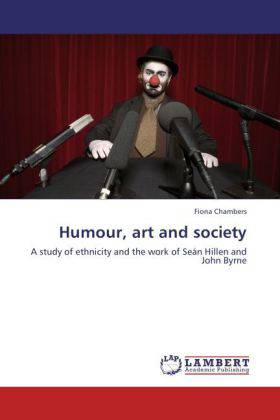
- Afhalen na 1 uur in een winkel met voorraad
- Gratis thuislevering in België vanaf € 30
- Ruim aanbod met 7 miljoen producten
- Afhalen na 1 uur in een winkel met voorraad
- Gratis thuislevering in België vanaf € 30
- Ruim aanbod met 7 miljoen producten
Zoeken
Humour, Art and Society
A study of ethnicity and the work of Seán Hillen and John Byrne
Fiona Chambers
Paperback | Engels
€ 48,45
+ 96 punten
Omschrijving
The abundance of artists using humour and the vast amount of academic research on the topic indicates that understanding humour is a serious matter. This book is a study into the use of humour and ethnicity in art, beginning with a basic overview into theories of humour, jokes and laughter with reference to the writings of Sigmund Freud and Henri Bergson. Covering a broad set of examples from artists such as Richard Prince and the Chapman brothers as well as examples from comedy, popular culture and literature, the text explores the idea of humour as a necessary human social function which has both positive and negative outcomes. It goes on to present a comparative case study of two artists from Northern Ireland dealing with similar subject matter: Seán Hillen and John Byrne. This research, including excerpts of interviews with the artists, explores why humour was and still is important in this work. This study would be of use to anyone interested in humour theory, the sociological and artistic applications of humour and it's role in conveying serious and difficult topics.
Specificaties
Betrokkenen
- Auteur(s):
- Uitgeverij:
Inhoud
- Aantal bladzijden:
- 52
- Taal:
- Engels
Eigenschappen
- Productcode (EAN):
- 9783848422326
- Verschijningsdatum:
- 26/03/2012
- Uitvoering:
- Paperback
- Formaat:
- Trade paperback (VS)
- Afmetingen:
- 152 mm x 229 mm
- Gewicht:
- 90 g

Alleen bij Standaard Boekhandel
+ 96 punten op je klantenkaart van Standaard Boekhandel
Beoordelingen
We publiceren alleen reviews die voldoen aan de voorwaarden voor reviews. Bekijk onze voorwaarden voor reviews.











